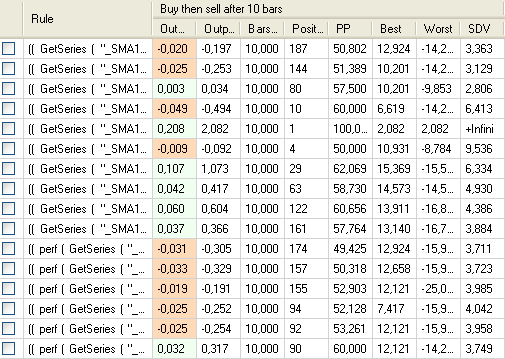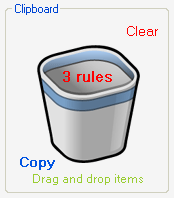Our goal is to build a profitable trading system that buys and sells a given index using several trading rules. This trading system or market timing system can be used later to trade this index through futures, options, ETFs or it can be added as a rule to trade stocks. In this post, we will show you one way to do this using QuantShare trading software. This technique or process can be applied to any market; it can be used by U.S. stock traders, U.K. stock traders... In order to create our market timing system, let us start by creating some composite indicators. This part is very important; you should create as many composite indicators as you can. Here are some ideas: - Percentage of stocks that are trading above their 20-bar simple moving average - Percentage of stocks that are trading above their 5-bar exponential moving average - Average Relative Strength Value of all stocks listed on a specific market - Ratio of the number of stocks with one-bar rate of change higher than 2% to stocks with one-bar rate of change lower than -2% You can also create or download some market breadth indicators available in sharing sever. Example: Advance Decline Volume Ratio, Up/Down Volume Spread, Cumulative Volume Index - CVI, Arms Index - TRIN... Or some economic and exchange specific indicators. Example: Distress Index - Economic measure, Inventory to Sales Ratio - I/S Ratio, NYSE - Trading Volume, Short Selling historical data... The next step would be to analyze these indicators to see if they have any predictive power. For this, we will use the "Rules Analyzer", which can be accessed by clicking on "Analysis" then "Rules Manager". Create a new list and add several rules; you can for example create the following rule for the "Average RSI" composite index: GetSeries("_RSI2", close, LastData) > 70 _RSI2 is the symbol name of this composite. You may also optimize some variables by transforming the last rule into: GetSeries("_RSI2", close, LastData) > a; where "a" vary from 50 to 90 with a step of 10. Try to create as many trading rules as you can and once you are done, click on the "Analyze" button to open the Analyzer settings form. In this form, select the index you want to analyze. As an example, you can use the S&P 500, Russell 2000, .... In the Outputs menu, select the outputs or exit rules. The output should be selected depending on the type of trading system you want to develop. If for example, you want to create short-term market timing system, then select "Buy then sell after 20 bars" and if you want to create a long-term market timing system, select "Buy then sell after 150 bars". You can also select several outputs to analyze the performance of your rules for each one of them. Click on "Continue" to start the analyzing process.  You should now create a list of the most profitable rules; do not include rules that produced few positions. Check the rules that interest you and then click on "Create a new list of rules from...". If you have not found any profitable rules, you should go back to the first step (creating composites) or the second one (creating trading rules) and repeat the process until you come up with interesting results. Note: In order to speed up the creation and selection of trading rules, use the Clipboard control. You can drag trading rules and drop them into this control To create a new list of rules from the rules contained in this Clipboard, click on "Copy" and move your mouse to the "Rules" or "List of Rules" panel.  To be continued.
|

|
|
|
|







